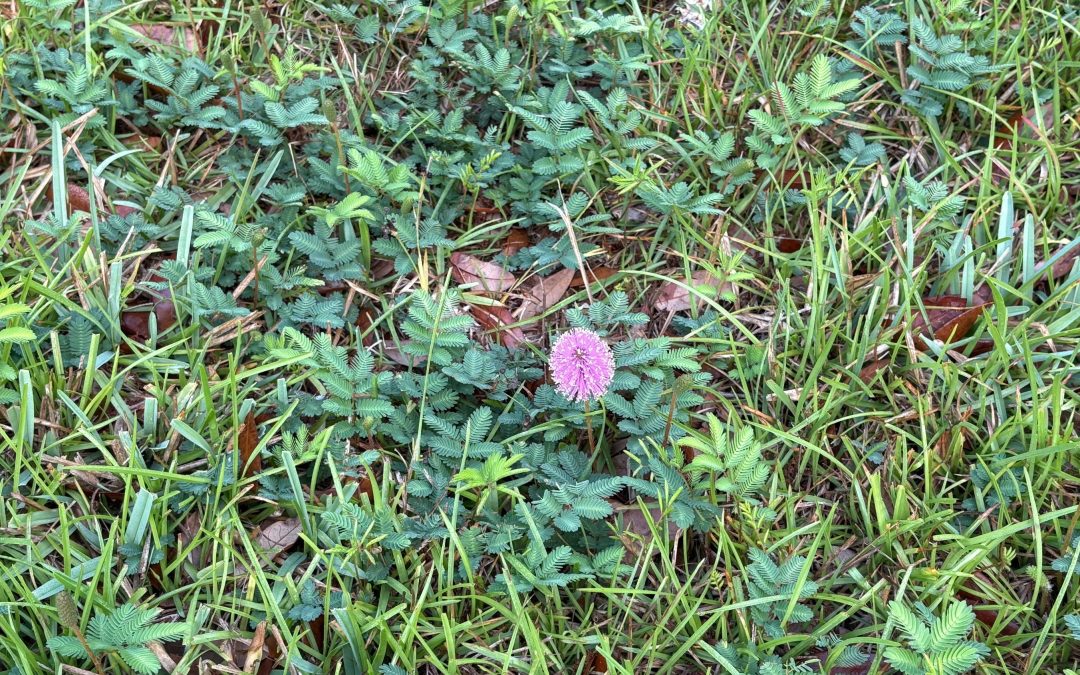
by Beth Bolles | May 8, 2025
Since so many people are asking questions about alternatives to lawns, I wanted to provide an update on the growth of Powderpuff Mimosa (Mimosa strigillosa) in my own home lawn. Almost a year ago, I made a video about using this native plant as a companion plant in an existing North Florida lawn. You may view the video if you missed it. https://www.youtube.com/watch?v=0NxKdN74jVs. Almost a year later, I am very happy with the spread of this plant through the lawn area and the beautiful blooms that offer interest in the lawn.
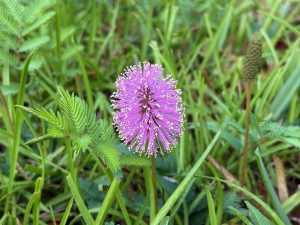
Powderpuff mimosa bloom. Photo by Beth Bolles, UF IFAS Extension Escambia County.
If you are considering this plant as a lawn companion in North Florida, realize that the foliage will often die back with a freeze. I did have a couple of small bare spots through winter. I could see the running stems of the mimosa but it did not have any foliage. That is one of the reasons why the plant is best as a companion plant instead of the main lawn feature in North Florida. You must also be considerate of the neighbor’s property if your planting area is on the border. Talk to your neighbor first about the strong possibility of the mimosa growing across a property line and if that is ok. My lawn area is bordered by many feet of mulched beds so that is not an issue for my planting. Like I mentioned in the video, I do have to edge the mimosa at the mulch beds where I don’t want it growing into other plants and groundcovers.
One last practice that I do have with the mimosa is hand pulling any weeds that I don’t want growing in it. I have a few rushes and some of the annual chamberbitter that will pop up. Some of the traditional weed management techniques that are acceptable for turfgrasses, will not be appropriate for mimosa. Consider carefully if you will be able to tolerate a few weeds or if you can commit to hand pulling a few here and there.
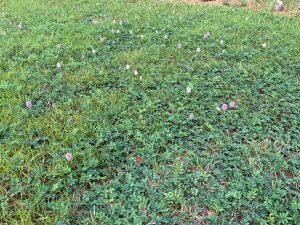
Mimosa will look different than your turfgrass. Photo by Beth Bolles, UF IFAS Extension Escambia County.
If you determine that your lawn or landscape is suitable for Powerpuff mimosa, you may look for plants at a native nursery. We have a couple of good native nursery options in the western Panhandle and you may be able to find plants throughout North Florida. There is also seed available through wildflower cooperatives. If you have a friend with some, you can always start a tray from a few cuttings too.
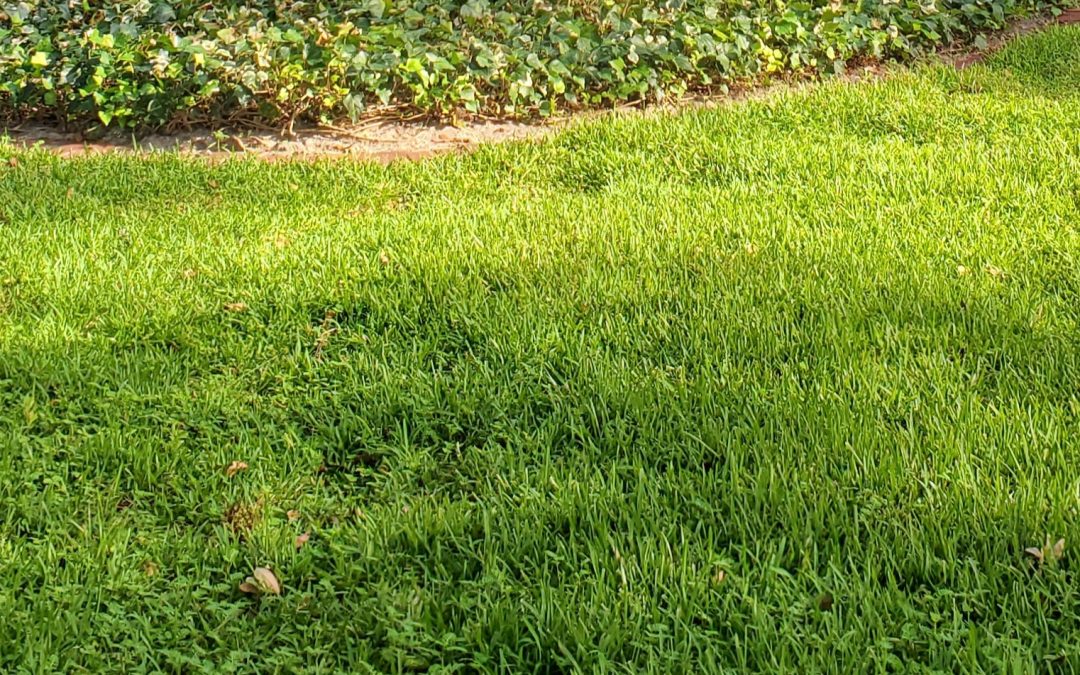
by Evan Anderson | Apr 30, 2025
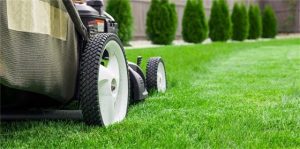
Mowing a lawn. Photo Credit: University of Florida/IFAS
Mowing a lawn isn’t always as simple as making sure there’s gas in the mower. Lawns are alive, and treating turfgrass without care can cause problems in the long run. To make sure your lawn is healthy, follow these guidelines.
- Know your turfgrass! Different grasses need to be mowed at different heights. Even the specific variety or cultivar can make a difference, but in general, bahiagrass should be cut to 3-4 inches, bermudagrass to ½ – 1½ inches, centipedegrass to 1½ – 2 inches, zoysiagrass to 2 – 2 ½ inches, and St. Augustinegrass to 2 ½ – 4 inches. Dwarf or finer-leaved varieties are usually cut lower and more often than taller grasses.
- Mow regularly enough to avoid removing more than 1/3 of grass blade height at one time. This makes sure the plant is not overly stressed and can recover from mowing quickly and efficiently, as well as promoting deeper root systems.
- Sharpen mower blades when they start to become dull. Freshly cut grass that has a ragged or torn appearance is a good sign that it’s time to sharpen the blade.
- Pick up debris such as twigs before mowing to avoid damage to the mower blade.
- Avoid mowing if grass is wet. Dew in the early morning or water from irrigation or rainfall will cause grass to clump and stick.
- In uneven lawns, take care to avoid scalping grass when pushing a mower over inclined areas.
- For a truly professional looking lawn, mow in different directions each time you mow. This can help to avoid forming wear patterns.
- Leave clippings on the lawn rather than bagging them. Clippings break down over time, recycling nutrients and adding organic matter. Grass clippings typically do not contribute to thatch buildup. If clumps form, they can be broken up with a rake to evenly distribute the cut grass over the lawn.
- Sweep clippings from hard, impervious surfaces to limit nutrient runoff.
Follow these guidelines and take care with other lawn management such as watering and irrigation, fertilization, and pest and disease control. You’ll have a great looking lawn before you know it!
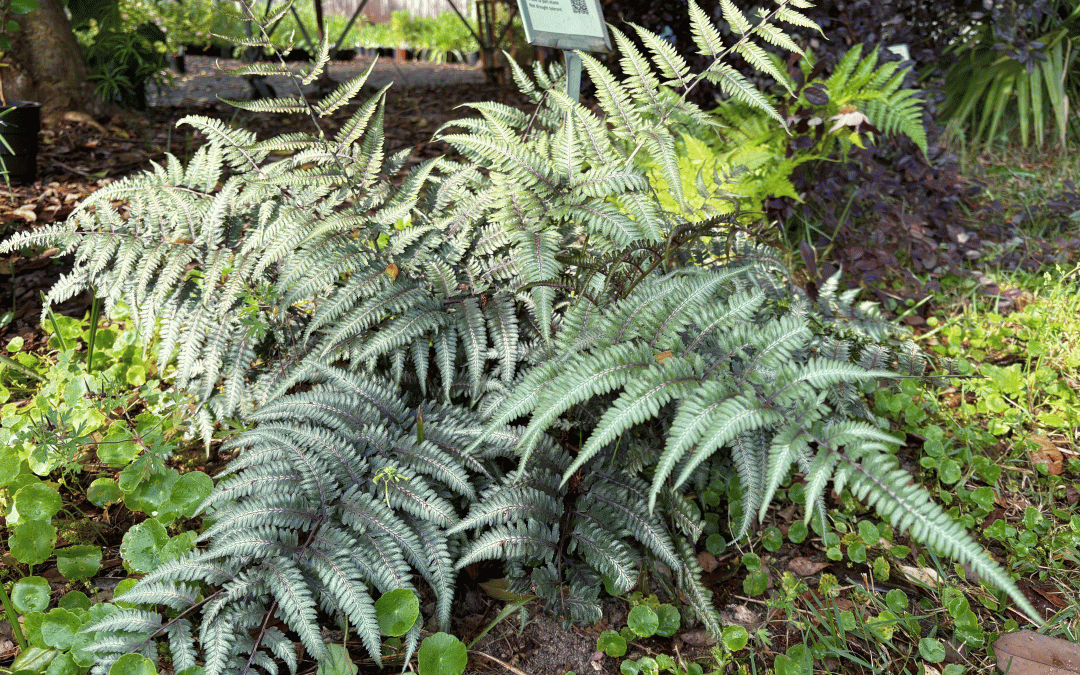
by Matt Lollar | Apr 30, 2025
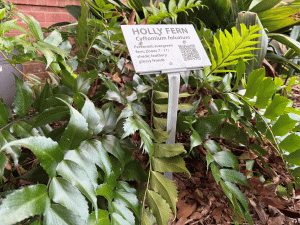
A holly fern in the landscape. Photo Credit: Matt Lollar, University of Florida/IFAS Extension – Santa Rosa County
On a recent episode of Celebrity Jeopardy, one of the categories featured answers all about ferns. The category got me thinking about all the confusing things about ferns.
First of all, are ferns even plants at all? Yes, but there are some unique characteristics that make them stand out. Ferns are vascular plants like most all of our other landscape and house plants, but they do not produce flowers, fruits, and seeds like other vascular plants. Instead, they produce spores in small, round structures called sporangia that are usually on the undersides of leaves. Sporangia are also found on fungi and algae.
A pretty noticeable feature about ferns is their leaves. Fern leaves are called fronds which consist of many small leaflets called pinnae. Fronds have a feather-like appearance that give most ferns a fine texture that softens the landscape. Sterile, non-spore producing fronds called fiddleheads develop from the center of the plants in early spring. They are called fiddleheads because they are curled like the top of a fiddle when they first emerge. The fiddleheads of some fern species are prized by chefs for their delicate flavor and crunchy texture. Fertile, spore producing fronds develop later in the season.
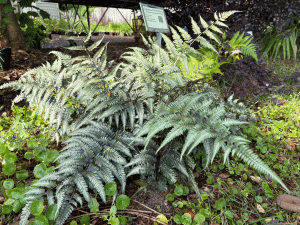
A Japanese painted fern in the landscape. Photo Credit: Matt Lollar, University of Florida/IFAS Extension – Santa Rosa County
When grown outdoors, most ferns do best in spots that receive filtered light or a bit more shade. However, some species of ferns that are grown indoors may need a little more light. Ferns like high humidity environments which is why we usually see them growing in floodplains and in wetlands in the wild. Indoor ferns should be watered thoroughly whenever the soil surface begins to feel dry. Choose potting soils with a high percentage of peat moss for its moisture retaining properties. And make sure you don’t over-fertilize.
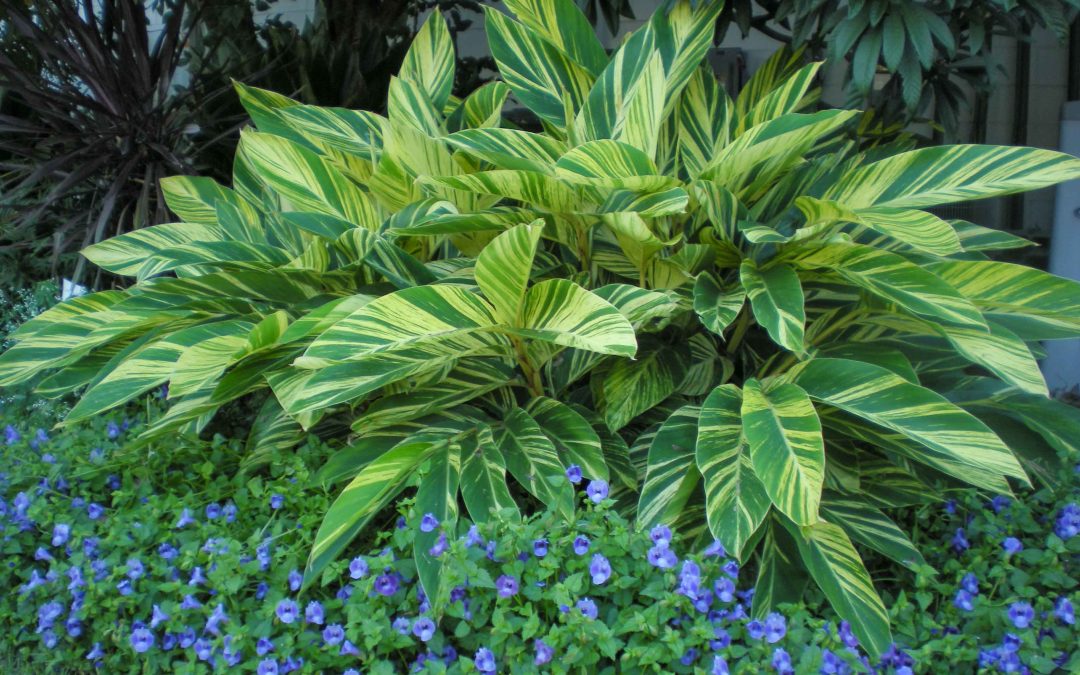
by Matt Lollar | Apr 30, 2025
If you’re going for a tropical look, but don’t want to lose your landscape, then you’ll get some great ideas from this episode of “Gardening in the Panhandle LIVE!”.
Most of the Florida Panhandle falls within USDA Plant Hardiness Zone 9a. The USDA Plant Hardiness Zone Map displays the average annual extreme minimum winter temperature for locations throughout the United States. Based on NOAA weather data, the date of the last spring freeze can range from February 16 to March 15 depending on location in the Florida Panhandle. It’s important to note these figures are based on averages and will vary from year to year.
Some plants need protection from freeze events. More information on protecting plants from cold weather can be found in the article “Preparing the Landscape for Cold Weather”.
There are quite a few native plants that can give your landscape a tropical look. Plants that have a tropical look usually have bright flowers, variegated leaves, and/or coarse textured foliage. A native that comes to mind is Florida anise that grows well in shaded areas and is available in varieties with variegated foliage and light green foliage. The native firebush (Hamelia patens) will freeze back some years, but provides a tropical focal point with its showy flowers and unique foliage. Some oakleaf hydrangea selections with chartreuse colored blooms can also provide a tropical aspect.
Other plants that give a tropical feel, but aren’t native to Florida include cast iron plant, canna lilies, red hot poker, fatsia, farfugium, holly fern, African false hosta, and loquat trees. Some tropicals that freeze back, but will come back in the spring include ornamental gingers and tumeric. To view other suitable plants for the Florida Panhandle check out the Florida-Friendly Landscaping Plant Guide.
Row covers and frost cloths can provide some insulation for sensitive plants. The thickness of the material used can vary significantly and offer different levels of freeze protection. It’s important the material covers the plants all the way to the ground, not just the foliage. More information on row covers in the article “Using Row Covers in the Garden” from the University of New Hampshire.
It’s important to wait to clean up and prune freeze damaged plants. Mid-to-late March is a good time to cut back plants that have been damaged from a freeze event. However, the longer you wait the better. More information for caring for these plants can be found in the article “Treating Cold-Damaged Plants”.
Coastal climates differ from mainland environments. In the winter, temperatures in these two places will be similar, but windchills may be exaggerated in coastal areas. Additional wind tends to dry plants out faster, but spots near water may allow for some experimentation with more tropical plant material.
For more ideas on plant selections for the Florida Panhandle, check out other Gardening in the Panhandle articles or contact your local Extension Office. The “Freeze Friendly Foliage Plants” episode of Gardening in the Panhandle LIVE! can be found at 2025 Gardening in the Panhandle LIVE! Freeze Friendly Foliage. Visit the NWD IFAS YouTube page to view additional episodes of Gardening in the Panhandle LIVE!
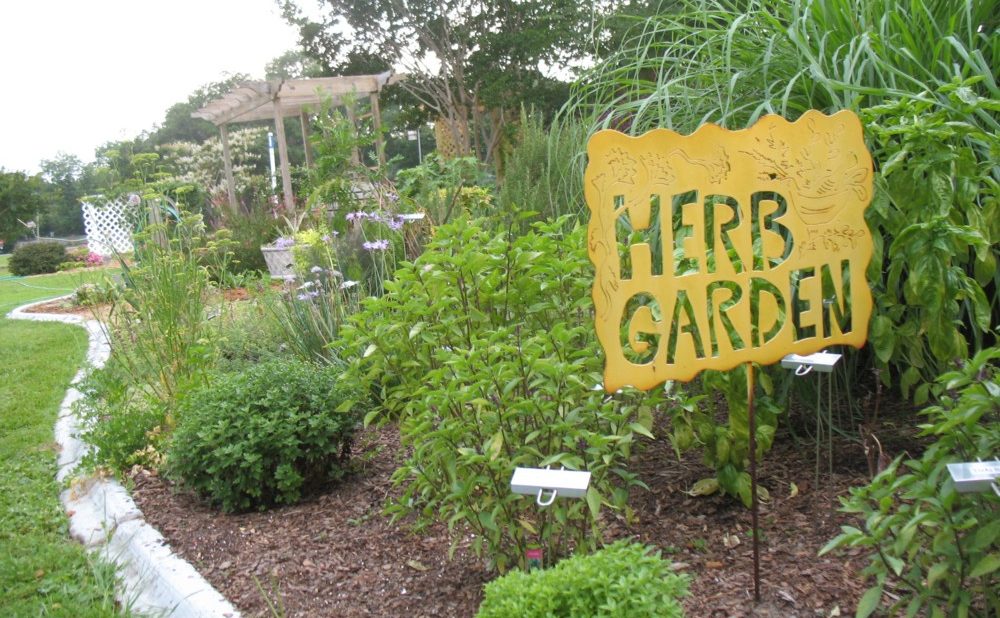
by Abbey Smith | Apr 24, 2025
Herbs are one of the best ways to add diversity to your garden or patio in the summer as they have many uses and unique traits. Summer is the season where herbs truly shine. There are many benefits of growing and using herbs at home, such as adding flavor to foods and beverages. Throughout this article, you will learn about different types of herbs and their uses.
The use of herbs has dated back almost 5,000 years, specifically in what we know today as modern Asia and the Middle East. “The Age of Exploration” enhanced the herb and spice trade in many European countries when Christopher Columbus set sail in 1492 to discover the trade route to India. Three hundred years later in 1715, Spanish explorers were pushed to the east coast of Florida in the area we know today as St. Augustine, Florida. They introduced various herbs and spices such as vanilla, annatto, and sassafras. Herbs have a unique history, and you can read more from the book Herbs and Spices in the Florida Garden written by Charles R. Boning.
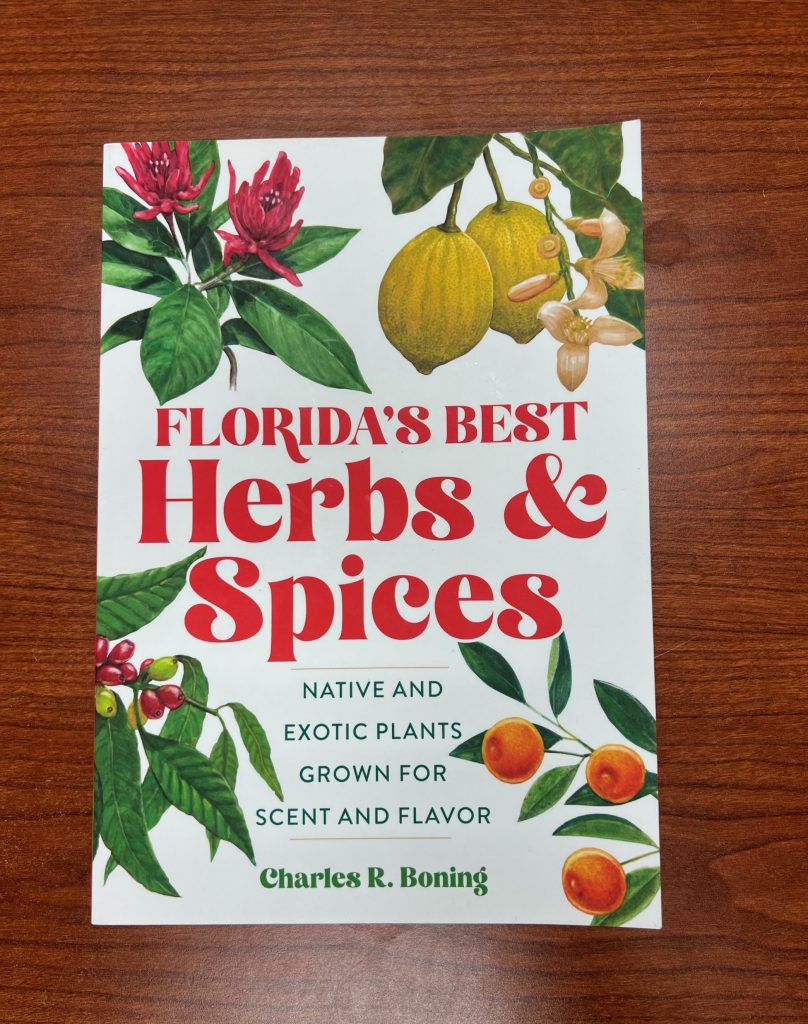
Photo Credit: Abbey Smith, UF/IFAS Extension Jackson County
There are many key things to consider when growing herbs at home, such as your growing location. Gardeners need to consider how easily their herbs can be accessed from the garden to the kitchen, the exposure of sunlight, and whether they will be grown in the ground or in containers. Most herbs like ample sunlight and well-drained soil. Herbs can be attractive additions to most flower beds and container pots. They can also be a great pollinator source as most will bloom. However, some herbs can grow quite aggressively and may be better suited for a container in order to control their growth.
There are various ways herbs can be propagated. The most common ways are by stem cuttings or germinating seeds. There are many herbs one can grow, but the best herb varieties acclimated for the summer heat are basil, chives, cilantro, cumin, lemon grass, marjoram, mint, oregano, rosemary, and thyme. Most herbs are used for culinary purposes like adding fresh flavor to a recipe or creating a spice rub for meat. When harvesting herbs to cook with, look for leaves that are younger and tender with good coloration to them. The younger leaves harbor more flavor and are better suited for fresh use.
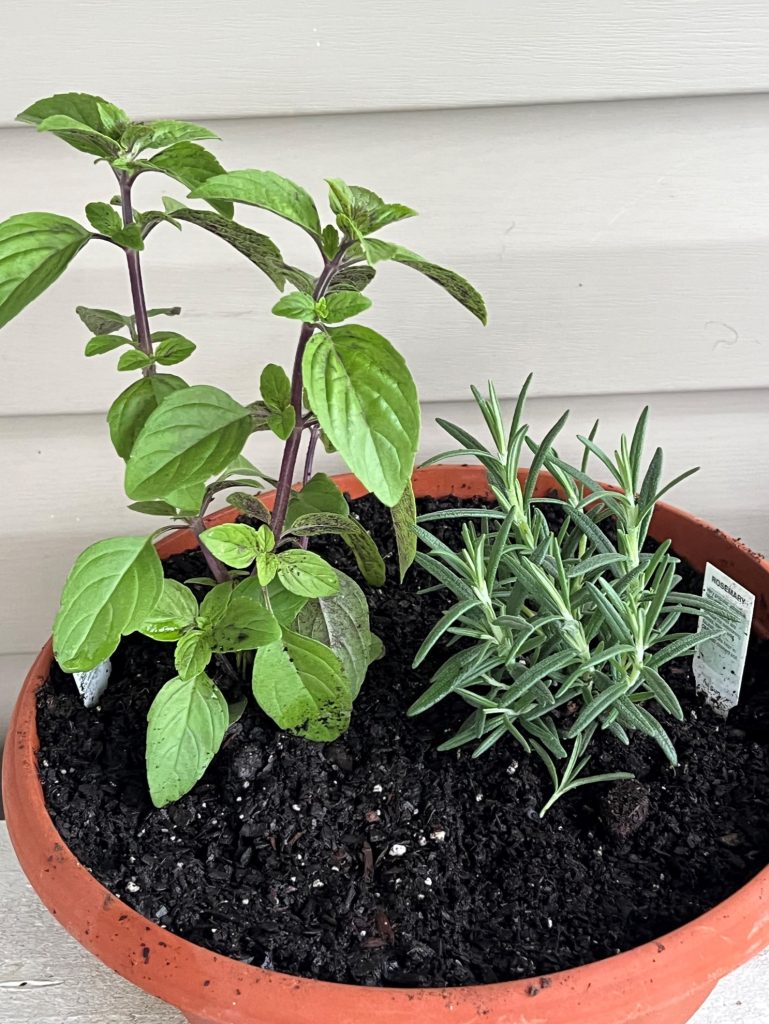
Container grown herbs. Photo Credit: Abbey Smith, UF/IFAS Jackson County Extension
Some of the most common herbs that gardeners keep on hand are basil, chives, and mint. See below the growing information for each type.
Basil
Basil belongs to the mint family, with many varying types that have a wide selection of scents and flavors. Sweet Italian basil is most used in Italian recipes, like pesto or marinara sauce. Basil is classified as an annual herb but can last for several seasons if it is winterized properly. You can plant basil in the early spring or fall and it prefers morning sun to afternoon shade. It is best to pinch off the flowers to produce more leaves, as the flowers can alter the flavor profile.
Chives
Chives are classified as a perennial herb that will flower between April and May. There are two different types of chives: garlic and onion. Both have obvious different culinary flavors but have the same growing requirements. Chives prefer full sun and a well-drained soil and will go dormant during the winter months. This herb will need to be divided every so many years to prevent overcrowding.
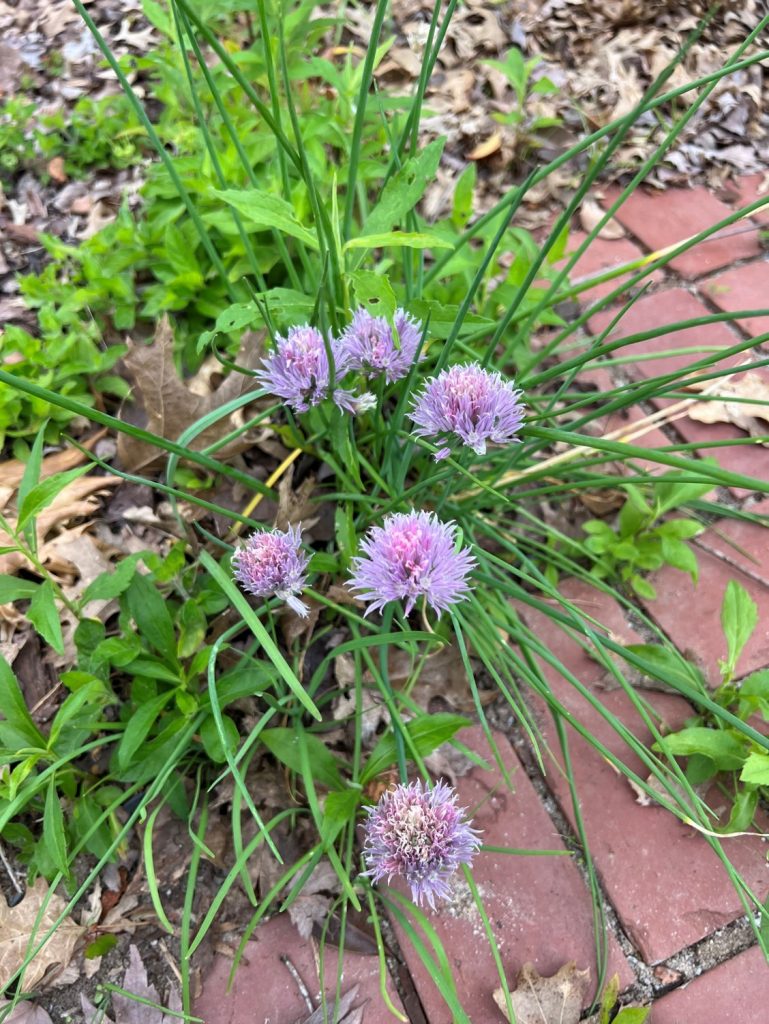
Onion Chives, Photo Credit: Abbey Smith, UF/IFAS Extension Jackson County
Mint
Mint is an easy to grow perennial herb that has hundreds of varieties to choose from. Some commonly recognized ones are Spearmint, Peppermint, and Chocolate Mint. It is commonly used in beverages and foods and is a great natural insect repellent. Mint has dark green levels and can grow in either shade, partial sun, or full sun. It likes plenty of moisture so heavy watering is needed. This is an herb that can quickly become a weed if not properly maintained so growing in a container is best.
To learn more about different herbs and their growing requirements, you can sign up for the UF/IFAS Jackson County Extension Garden to Table Workshop: Summer Herbs on May 9 at the Jackson County Extension Office from 6:00 pm to 8:00 pm. You can register on Eventbrite at: https://www.eventbrite.com/e/garden-to-table-summer-herbs-registration-1111961539899?aff=erelexpmlt
For more information please visit:
https://gardeningsolutions.ifas.ufl.edu/plants/edibles/vegetables/herbs/
https://gardeningsolutions.ifas.ufl.edu/plants/edibles/vegetables/herbs-for-pollinator-gardens/













